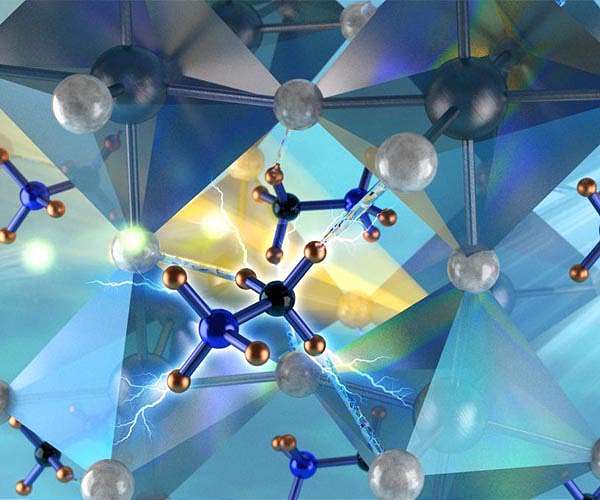Identifying important organic-an organic interactions sites for improved emissions in hybrid perovskites through printing technology
A research team at Jilin University has developed a new approach using printing technology to locate organic inorganic interactions sites in non-hybrid metal perovskites. This innovative method offers valuable insight into the photophysical mechanisms that control hybrid perovskites and offers guidelines for designing materials with tailor -made optical properties.
“Earlier research is mainly focused on the role of hydrogen binding in shaping the photophysical properties of hybrid perovskites,” Guanjun Xiao, the lead researcher of the study. “However, the lack of research into the interaction mechanisms of non-hybrid perovskites bound has an accurate material design hindered for targeted applications.”
By using suppressed techniques, Xiao and his team studied the specific interactions sites within the non-hybrid PEROVSKIET (DBU) PBBR3. Their findings emphasized that the spatial ranking of BR-N atomic couples plays a crucial role in influencing organic inorganic interactions.
The research was published on September 16 in *Research *, a Science Partner Journal, launched by the American Association for the Advancement of Science (AAAS) in collaboration with the China Association for Science and Technology (Cast). Xiao is a professor of the State Key Laboratory or Superhard Materials at Jilin University.
The study included synthesizing microrod (DBU) PBBR3 using the hot injection method and systematically analyzing the optical and structural properties under high pressure. The researchers noted that the emission of the material improved and a blue shift under pressure, with photoluminescence quantum yield that reached 86.6% at 5.0 GPA. In addition, photoluminescence lifetime measurements indicated an oppression of non-radiation recimination under pressure.
An important discovery was the presence of an abnormally improved Raman mode in the printing range where emission improvement took place. “This suggests a potential connection between the two phenomena,” Xiao noted. Further analysis identified Raman mode as linked to organic inorganic interactions, probably associated with N-BR binding.
To deepen their understanding, the team carried out structural evolutionary studies under pressure, supported by first principle calculations. They confirmed that the primary determinants of interaction strength were the spatial set -up of N and BR – atoms, including their distance and dihedral angle. A remarkable isostructural phase transition at 5.5 GPA changed the primary compression direction, which initially strengthened the organic inorganic interactions before led to a subsequent decrease trends that are aligned with observed optical property changes.
“These findings are bridging an important knowledge gap in understanding organic inorganic interactions in non-hybrid halides, and offer valuable design principles for materials with specific optical performance goals,” Xiao explained.
Research report:Identifying organic-anganic interactions sites for emission improvement in non-hybrid Hybrid perovskiet via printing technique

